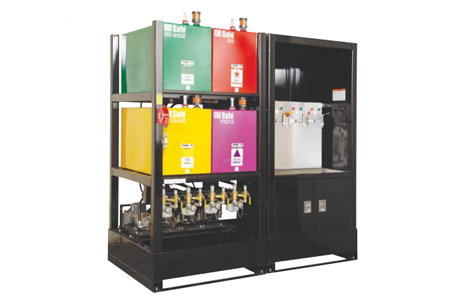Everyday maintenance personnel in plants across the Philippines fill or top off systems with new lubricants. Yet, they often add mixed, chemically-depleted lubricants containing particulate, chemical, and moisture contamination. Poor in-plant storage is to blame for these incidents.
Lubricants, like bearings, gears, and valves, should be regarded as functional components in mechanical systems. The first step toward achieving proactive maintenance of your lubricants and equipment begins with proper in-plant storage and handling.
Lubricant Packaging
Lubricants are packaged in many forms to meet various consumption rates and storage facilities. The four main industrial lubricant packages are pails, drums, totes, and bulk tanks. Consider the following variables while choosing the suitable packaging for your needs:
Average consumption rate
Vendor's standard delivery time
Storage facility size and condition
Storage Life
Most lubricants have supplier-recommended shelf lives based on the lubricant's additive package. Shelf life information is available from your lubricant supplier and manufacturer for each product used. Proper storage conditions determine the shelf life of your fluids. To enhance lubricant shelf life, most manufacturers prescribe a storage technique. The following conditions have been proven to affect a lubricant's storage life:
- Humid Environment
- Temperature Extremes
- Varying Temperatures
Storage
 Satellite Lube Room
Satellite Lube Room
Indoor
Pails, drums, and totes must be stored clean and dry. Temperatures in storage should be kept temperate at all times. Lubricants should be stored free from all sorts of industrial contamination. Bungs must be kept tight at all times, and drum covers should be used when drums are stored upright.
Outdoor
If you must keep lubricants outside, protect them from rain, snow, and other factors. If the drums must be upright in outdoor storage, use drum covers or tilt drums to drain the moisture that gathers on the top around the bungs. Avoid storing water-based fluids outside; severe temperatures can cause even more damage through freezing and evaporation.
Identification
Two expected consequences of lubricant mismanagement are cross-contamination and lubricant confusion. All drums must be labeled and stenciled to ensure proper product identification. Avoid employing labeling methods that are difficult to read or that will wear out over time. Label containers that must be stored outside with extreme care since the elements may destroy the label. Color coding labels simplify the process, reducing the risk of misapplication. If you use a color coding scheme, ensure more alpha or numeric information to allow for color blindness.
New Oil
New oil is the dirtiest oil in the facility. Lubricant containers are often reused and may have been exposed to harsh conditions before arriving at your plant. The cleanliness of new oils ranges between ISO 4406 codes of 16/13 to 22/19. Considering most hydraulic and lubrication systems need ISO cleanliness of 17/14, or better, the new oil contamination level is too high for immediate service without conditioning. To guarantee efficient contamination management, new oils should be analyzed.
Lubricants in storage are also subject to particle aggregation. When tiny particles join, they generate more massive, more dangerous particles. These harmful particles will fall to the bottom of the container. While drum agitation is excellent at re-suspending additives, it is also effective at re-suspending settled contaminants.
Solutions
 Lubrication Work Center Bulk Storage System
Lubrication Work Center Bulk Storage System
Since spoilage and contamination of lubricants are significant concerns in the operation of industrial machinery, Le Price International has solutions to solve these problems. Contact Le Price to design and install a state-of-the-art lube bay intended for your operational requirements to hasten service intervals and cut wasteful practices.
Adequate contamination control systems increase machine performance and reliability, lengthen component life, and reduce operating and maintenance costs. You can keep your oil clean with Le Price's desiccant breathers, filtration systems, and other clean oil solutions.
Source:
Godin, F. (n.d.). Best Practices for Lubricant Storage and Handling. MachineryLubrication. Retrieved from https://www.machinerylubrication.com/Read/52/lubricant-storage-handling
































